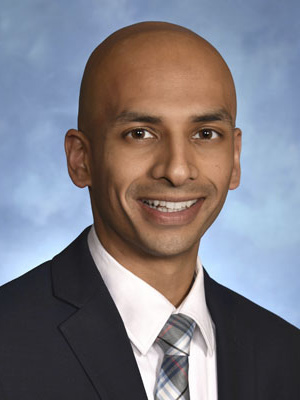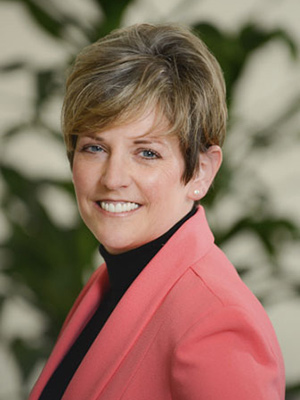How can I get the most out of my telemedicine appointments?

Karthik Rajasekaran,
head and neck surgeon at the University of Pennsylvania Perelman School of Medicine in Philadelphia. Photo courtesy of Karthik Rajasekaran
KARTHIK RAJASEKARAN: Telemedicine has been around for a while, but prior to the COVID-19 pandemic, it had not gained much traction. Now, everyone has been thrown right into it.
In the first couple of weeks, there were some things that became obvious to me right away. My patients often were on the couch in a dark room. They were wearing hoodies or other baggy and concealing clothing. Sometimes they were sitting with a window behind them or looking down at their phone. I’m glad my patients felt comfortable, but all of these factors made a physical exam nearly impossible to do. These are all things you don’t think about until you are in it.
So, I decided to write down some important guidelines. In my work, I see patients with head and neck cancer, but these guidelines may be adapted for other situations and needs. The most crucial thing is to sit in a well-lit location. Have your laptop or smartphone raised up so it’s at about eye level. Arrange yourself so there won’t be a window behind you creating a silhouette effect. Dress so it will be easy for the doctor to see and examine you as needed on camera.
If any equipment is needed, make sure you have it available. I recommend a flashlight to shine on the areas your doctor needs to see. To look in the throat, a spoon helps since people do not have tongue depressors at home. What you need will, of course, vary depending on the nature of the appointment.
I highly recommend having a second person available, if possible. This person can assist you with tasks or additional needs that may come up during the appointment. For instance, it may be easier for them to shine the light during an exam than for you to do it yourself.
Another key element to consider is your internet connection. If the connection is poor, it can be frustrating. You may catch every third word or find yourself talking over each other. I prefer the larger screen of a computer or laptop, but if you don’t have Wi-Fi at home or your Wi-Fi is unreliable, a smartphone will work just fine too.
There are many potential applications available for making video calls. If the application you’ll be using is new to you, consider logging in with a nurse or perhaps even a friend beforehand so you know what to expect and can work out any kinks. Telemedicine still feels very new to all of us, and it’s a steep learning curve for everybody. But it will get easier.
GETTING THE MOST FROM TELEMEDICINE // The American Cancer Society explains what telemedicine and telehealth are and how they are used in cancer care. // The European Society for Medical Oncology presents an oncologist’s perspective on telemedicine.
How should I respond to a friend who wasn’t there for me during treatment?

Meredith Cammarata, clinical social worker at Memorial Sloan Kettering Cancer Center in New York City. Photo courtesy of Meredith Cammarata
MEREDITH CAMMARATA: Unfortunately, I hear this concern from many of my patients who have completed treatment. When friends you imagined being part of your support team during cancer treatment were not there for you, it can leave you feeling hurt, confused and maybe even angry.
When a loved one receives a cancer diagnosis, friends and family typically try their best to offer love and support throughout treatment. At the same time, everyone responds and copes differently. Generally, family and friends don’t want to intentionally cause pain or hurt and only want to help.
Communication is one of the most important components in any type of healthy relationship between two people. In times of stress, we’re sometimes less able to communicate within a relationship as effectively as we normally do. There are so many factors that can contribute to this communication breakdown, but often it leaves both parties feeling frustrated and possibly misunderstood.
If you have lost touch with a friend who you thought would be there for you during your treatment, my first recommendation would be to open the lines of communication. Invite your friend to talk to you and tell her how hurt you felt when she wasn’t there for you in the way you expected. Then provide her with the opportunity to respond and explain herself. If talking this over seems too difficult, write your friend an email.
If you try to open the lines of communication and it doesn’t meet your expectations, remember that you can’t change another person. You can only change your own actions and feelings. At some point, you may need to find support in other ways. Focus on the people in your life who you do find to be helpful and supportive. If you are having a difficult time finding the support you need within your group of family and friends, you may want to consider talking with an oncology social worker or other mental health professional. You may also consider joining a post-cancer treatment support group.
FINDING FRIEND SUPPORT // The Mayo Clinic explores how cancer survivors can reconnect with loved ones after treatment. // Cancer Support Community offers resources about asking friends and family for help.
How can I make sure that my caregiving dovetails with professional caregiving?

Melissa “Missy” Ring, registered nurse and Director of Regulatory and Compliance at the National Hospice and Palliative Care Organization in Alexandria, Virginia. Photo courtesy of Melissa “Missy” Ring
MELISSA “MISSY” RING: I can speak to this from personal experience as a caregiver for my husband and grandmother and as a hospice nurse. It boils down to communication and trust on both sides. It’s important for a professional caregiver to understand both patient and family wishes and goals. It’s also important for you to understand the goals of the professional caregiver.
When I’ve worked with patients and families, one of the first things I ask is how they would prefer to be communicated with and what is the best time for that to take place. Taking care of a loved one is overwhelming. There’s a lot going on. A professional caregiver is there to help you think through what needs to happen and to make things easier, not harder. So, setting aside time for regular communication is key in this partnership of care.
Make sure you understand what the provider is telling you, and that you give and get feedback on how things are going. Share any concerns you may have about your comfort level in doing what needs to be done. Ask for the help, clarification or validation that you need.
For example, if your loved one is debilitated, you may need some education on how to get her out of bed each day. Ask yourself: Are you comfortable and confident in your ability to do this? If not, then it’s important to explore what you need to feel comfortable or what additional assistance can be made available to you.
There will be an initial set of goals, but this will be an evolving process with each visit as circumstances and needs change. These changes should be part of the ongoing conversation between you and the professional caregiver.
Never be afraid to ask questions. Keep a notebook by your side and write down things you may forget. For both patient and caregiver, this is such a vulnerable time. Give yourself permission to acknowledge this and then give yourself permission to ask questions and to feel. This is a loved one you are taking care of and you want to do the best job that you can. But you can’t leave yourself out of the equation. If you have concerns or additional needs, ask the professional caregiver what other resources you may draw on to help you through this difficult time.
WORKING WITH CAREGIVERS // The AARP explains how to find a professional caregiver. // The Family Caregiver Alliance outlines areas to consider when deciding whether to hire a professional caregiver for in-home help.
Cancer Today magazine is free to cancer patients, survivors and caregivers who live in the U.S. Subscribe here to receive four issues per year.




